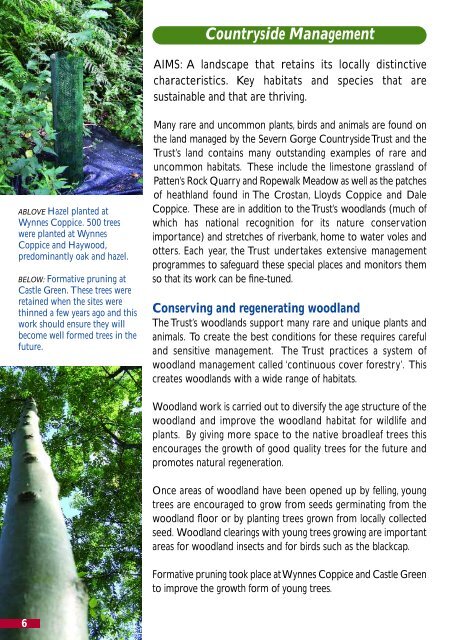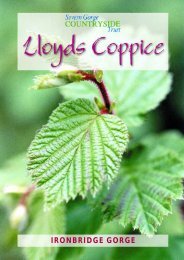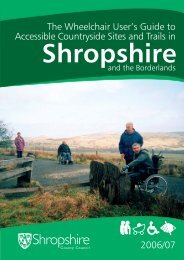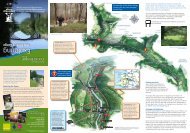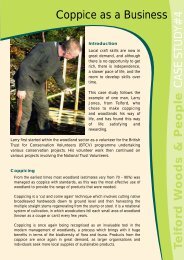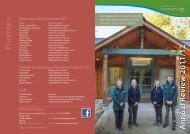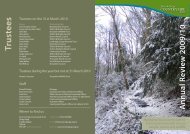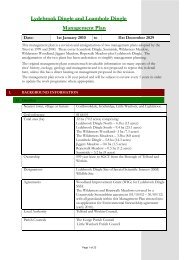here - Severn Gorge Countryside Trust
here - Severn Gorge Countryside Trust
here - Severn Gorge Countryside Trust
You also want an ePaper? Increase the reach of your titles
YUMPU automatically turns print PDFs into web optimized ePapers that Google loves.
<strong>Countryside</strong> Management<br />
AIMS: A landscape that retains its locally distinctive<br />
characteristics. Key habitats and species that are<br />
sustainable and that are thriving.<br />
ABLOVE Hazel planted at<br />
Wynnes Coppice. 500 trees<br />
were planted at Wynnes<br />
Coppice and Haywood,<br />
predominantly oak and hazel.<br />
BELOW: Formative pruning at<br />
Castle Green. These trees were<br />
retained when the sites were<br />
thinned a few years ago and this<br />
work should ensure they will<br />
become well formed trees in the<br />
future.<br />
Many rare and uncommon plants, birds and animals are found on<br />
the land managed by the <strong>Severn</strong> <strong>Gorge</strong> <strong>Countryside</strong> <strong>Trust</strong> and the<br />
<strong>Trust</strong>’s land contains many outstanding examples of rare and<br />
uncommon habitats. These include the limestone grassland of<br />
Patten’s Rock Quarry and Ropewalk Meadow as well as the patches<br />
of heathland found in The Crostan, Lloyds Coppice and Dale<br />
Coppice. These are in addition to the <strong>Trust</strong>’s woodlands (much of<br />
which has national recognition for its nature conservation<br />
importance) and stretches of riverbank, home to water voles and<br />
otters. Each year, the <strong>Trust</strong> undertakes extensive management<br />
programmes to safeguard these special places and monitors them<br />
so that its work can be fine-tuned.<br />
Conserving and regenerating woodland<br />
The <strong>Trust</strong>’s woodlands support many rare and unique plants and<br />
animals. To create the best conditions for these requires careful<br />
and sensitive management. The <strong>Trust</strong> practices a system of<br />
woodland management called ‘continuous cover forestry’. This<br />
creates woodlands with a wide range of habitats.<br />
Woodland work is carried out to diversify the age structure of the<br />
woodland and improve the woodland habitat for wildlife and<br />
plants. By giving more space to the native broadleaf trees this<br />
encourages the growth of good quality trees for the future and<br />
promotes natural regeneration.<br />
Once areas of woodland have been opened up by felling, young<br />
trees are encouraged to grow from seeds germinating from the<br />
woodland floor or by planting trees grown from locally collected<br />
seed. Woodland clearings with young trees growing are important<br />
areas for woodland insects and for birds such as the blackcap.<br />
Formative pruning took place at Wynnes Coppice and Castle Green<br />
to improve the growth form of young trees.<br />
6


